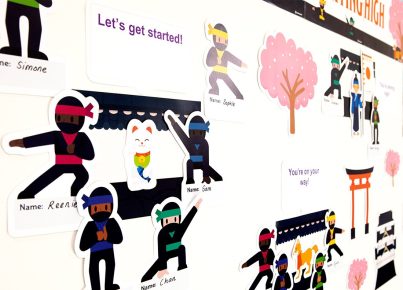Introduction
Maslow’s Hierarchy of Needs is a psychological theory proposed by Abraham Maslow in 1943. It comprises a five-tier model of human needs, often depicted as hierarchical levels within a pyramid. These needs range from the most basic (physiological) to the highest (self-actualization), and the theory emphasizes that individuals must fulfill lower-level needs before addressing higher-level ones. To make learning about Maslow’s Hierarchy of Needs engaging and memorable, we have compiled 13 hands-on activities that can be employed in educational environments.
1.Physiological Needs: Breathing Exercise
Explore the importance of physiological needs by having participants practice deep breathing exercises. This activity will demonstrate the significance of a fundamental need – breathing – and how it impacts our overall well-being.
2.Safety Needs: Trust Walk
Organize trust walks to emphasize the importance of feeling safe and secure. Blindfolded participants will rely on a partner to guide them through an obstacle course, highlighting trust and safety as essential aspects of human fulfillment.
3.Love and Belonging: Team-Building Games
Encourage team-building activities like scavenger hunts or cooperative games to represent the emotional bonds people crave with others.
4.Esteem Needs: Celebrating Accomplishments
Have each person write down one personal accomplishment on a sticky note. Create an “esteem board” where participants can post their notes, allowing everyone to celebrate their achievements together.
5.Self-Actualization: Vision Boards
Set up a vision board creation session to inspire personal growth. Participants can create collages that represent their values, aspirations, or goals, fueling conversations about self-actualization.
6.Pyramid Building Challenge
Divide participants into groups and provide them with materials to build pyramid-shaped structures representing Maslow’s hierarchy. The activity becomes an interactive way to teach the theory, as each level must be strong and stable for the pyramid to remain upright.
7.Pin the Need on the Hierarchy
Create a poster-sized version of Maslow’s hierarchy, and have participants attempt to place different human needs on the correct levels while blindfolded. This activity encourages discussion about our understanding of basic versus higher-order requirements.
8.Physiological Needs: Food and Hydration Tracking
Teach participants to recognize their physiological needs by having them track their food and water intake for a few days. This activity demonstrates how easily we can neglect these essential components of our well-being.
9.Safety Needs: Emergency Preparedness Kit
Organize an emergency preparedness kit-building workshop to emphasize our safety needs, illustrating the importance of being prepared during uncertain times.
10.Love and Belonging: Sharing Life Stories
Have participants pair up and take turns sharing personal life stories with one another, fostering deeper connections and a sense of belonging among the group.
11.Esteem Needs: Skills Showcase
Host an event where participants can showcase a unique skill or talent they possess, celebrating individuals’ strengths and boosting self-esteem.
12.Personal Growth Journaling
Introduce journaling as a method for self-reflection and personal growth. Encourage regular writing practice to support progress towards higher levels in Maslow’s hierarchy.
13.Role-Playing Activities
Assign different roles that represent various positions within society to participants, simulating how others might prioritize their needs differently based on their circumstances.
Conclusion
Engaging in these hands-on activities will help educators and learners understand Maslow’s Hierarchy of Needs in an immersive way. By addressing each level on the hierarchy through interactive exercises, participants will see the importance of meeting basic needs first before moving up the pyramid towards self-actualization, providing valuable insights for personal growth and development





